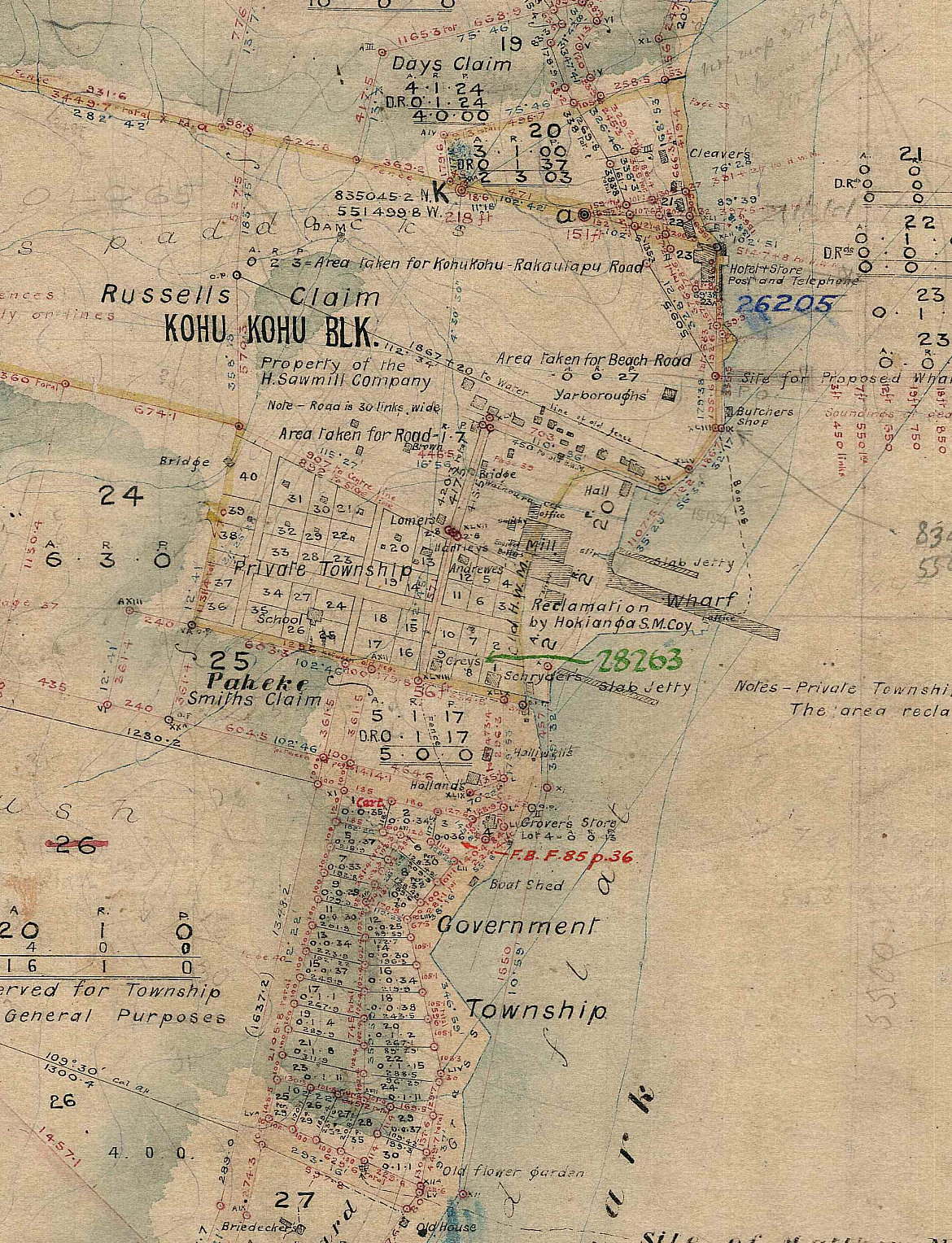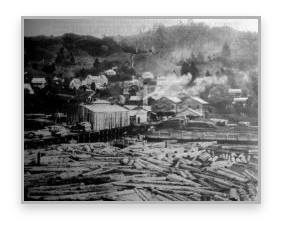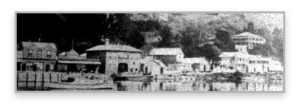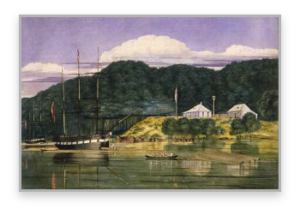
Part of Map from 1885
Early Days

Between 1828 and 1831 the flax industry boomed, which together with the relative peace in northland stimulated a ripple of immigration into New Zealand. Europeans of all kinds - sawyers, traders, shipwrights, ex-whalers, runaway convicts and sailors, missionaries and captains - passed in and out of Hokianga and many remained.
Judge H. A. H. Munro describes how his father saw Hokianga in about 1835: "There were only two pakeha settlements in the country, namely Bay of Islands and Hokianga. He was disgusted at the state of affairs at the former place, and wrote to my mother to say it was a hell on earth. However, he went round the Hokianga in his cutter and was agreeably surprised."
The Law of the Harbour
By 1830, the pakeha settlement of Hokianga was well under way. Nonetheless, the ancient tribal customs, particularly those of tapu, muru and utu were The Law on the harbour, to which Maori and pakeha alike were subject. Understandable, the Europeans resented being plundered and robbed, even if in accordance with tribal law.
Change in Maori society also undermined tribal law. By 1840, most Hokianga Maoris had become Christians and intelligent and powerful chiefs such as Nene and Patuone realised that the Maori would not gain by resisting the imposition of British law. They signed the Treaty of Waitangi fully aware that the Maori custom could no longer be the only law in the land.
The years between 1840 and 1870 can be dealt with quite briefly. After the Treaty of Waitangi, the capital was shifted from the Bay of Islands to Auckland, and Hokianga sank into decline. The geologist Dieffenbach noted "The largest timber trees, those fit for the Royal Navy are nearly all gone ... there are already 200 Europeans settled on the Hokianga, traders and sawyers who found ample employment as long as fine spars and cheap labour were to be obtained. But all this is now greatly changed."
 The first power timber mill was built in Kohukohu in 1879 by a Sydney firm, Greenfield and Stewart. The capacity of this mill was 4 million feet a year as was later expanded to 6 million feet a year.
The first power timber mill was built in Kohukohu in 1879 by a Sydney firm, Greenfield and Stewart. The capacity of this mill was 4 million feet a year as was later expanded to 6 million feet a year.
During the depression in 1882 however, the mill caught fire. It was back in operation two months later but was forced to close in 1886.
1882 also saw the start of a regular steamship service to Auckland. In 1888 the Kauri timber Co. came into the scene and established in
Kohukohu was to become the largest mill in the Southern Hemisphere. Acres of land were reclaimed by sawdust and the little bay in the centre of the town was completely filled in, the mill built on it and sawdust spread out far into the harbour.
 This picture of Kohukohu was sent in by Murray Johnston.
This picture of Kohukohu was sent in by Murray Johnston.
It is from a family photograph album that is over 100 years old. If anyone can date the photograph or knows the photographer please contact us here at the kohukohu website.
A New Era Begins
In 1909 the mill closed down; in 1912 it was demolished.
Kohukohu had grown from a village of perhaps 50 people in 1870 into a major commercial centre of the harbour with over 600 people in 1910.
But when the timber trade ended, it grew fat on butter. A new and more reliable industry was replacing the timber. The Hokianga Co-operative Dairy Co. opened its factory in Motukaraka in 1908: Hokianga now had two legs to stand on!
The Cyclopedia of New Zealand [Auckland Provincial District] published by The Cyclopedia Company, Limited, 1902, Christchurch gives a fascinating snapshot into the town at this time.


